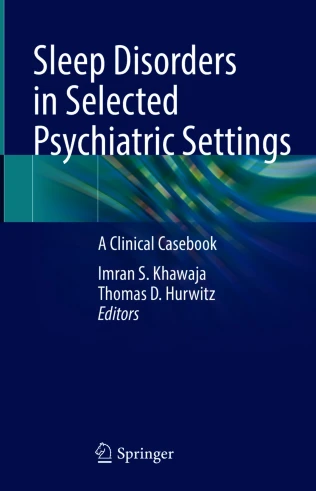Sleep Disorders in Selected Psychiatric Settings
January 2021 | Springer
Telesleep Medicine
Sleep disorders are prevalent, and our understanding of these disorders has grown significantly during the last few decades. Sleep laboratories grew out of intense research in academic centers and expanded to almost any major health-care establishment. Sleep centers provide comprehensive assessment, diagnosis, and treatment of various sleep disorders. Advancement of technology, the presence of the World Wide Web, and wireless services added to the universal presence of smartphone technology provided unprecedented connectivity and accessibility. Logically, sleep services that are most in need of a detailed interview and completion of some objective assessments are amenable to remote access. Telemedicine provides services in both synchronous and asynchronous fashion. The synchronous telemedicine includes practitioner’s detail evaluation of patients in real-time, diagnostic assessments, initiation of various therapies, follow-up of therapy and assessment of utilization, evaluation of patients’ knowledge, patient education, and implementation of cognitive-behavioral therapy of insomnia. Asynchronous services encompass review and interpretation sleep study and other objective test results. Telemedicine promises to improve access to health care as it provides care anytime and anyplace. However, providing medical care using telemedicine has its complexities. In this chapter, we will review the application of telemedicine in the field of sleep services and discuss issues related to the implementation of telesleep (TS) in a government health-care setting.
Authors and Affiliations
Michael E. DeBakey VA Medical Center, Department of Medicine, Houston, TX, USA
Amir Sharafkhaneh, Shahram Moghtader & Supriya Singh
Dignity Health, Houston, TX, USA
Bita Farhadpour
Baylor College of Medicine, Department of Medicine, Houston, TX, USA
Mary Rose
Corresponding author
Correspondence to Amir Sharafkhaneh
Editor information
MD TruCare PA, Grapevine, TX, USA
Imran S. Khawaja
Minneapolis VA Health Care System, Hennepin County Medical Center, University of Minnesota Medical School, Minneapolis, MN, USA
Thomas D. Hurwitz
About this chapter



